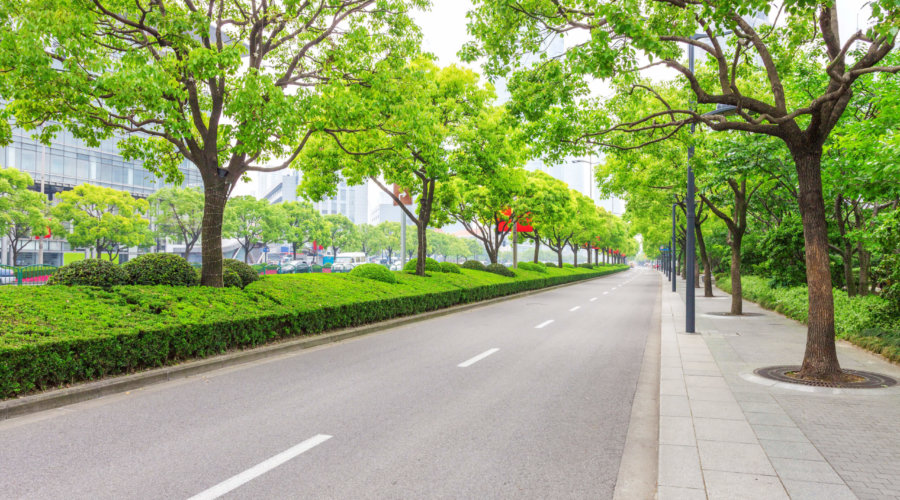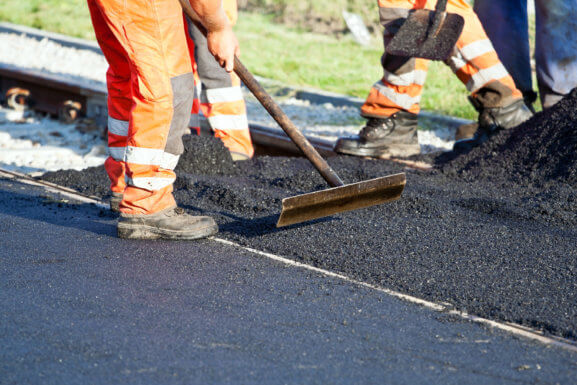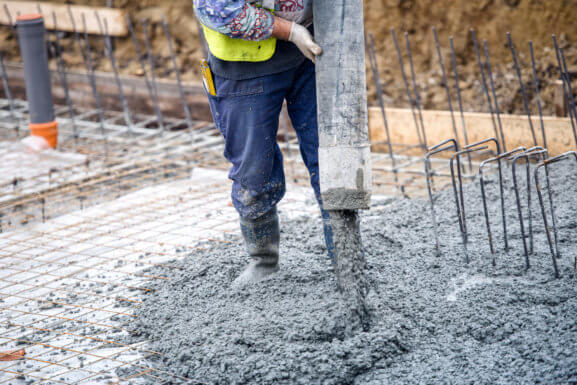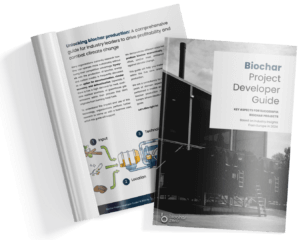Due to climate crisis more and more trees are dying in urban areas. This is associated with considerable costs for municipalities as well as degradation of biodiversity and urban climate. One solution is the Stockholm model – a new design of combining tree planting with rainwater drainage.
Advantages of Biochar for Urban Trees
- Reduction of direct and indirect costs for urban and park trees as well as other woody plants in the existing stock and for new plantings
- Reduction of tree mortality due to global warming
- Prevention of pavement damage caused by roots
- Stockholm Model:
- Rich in structure, prevents soil consolidation and creates pore space with oxygen
- Replacement of classic water infiltration system and reduces sewage plant inputs
- Creation of long-lasting planting beds
The stress factors for trees in an urban environment are diverse. Also, the resilience of urban ecosystems in Europe has been gradually weakened over the past few decades by increasingly extreme climatic conditions. Even tree species that are considered resistant such as sycamore and whitebeam are being affected by heavy rainfall, heat waves and storms, as well as fungal and pest infestations.
Increased watering effort leads to increased costs for municipalities. Even if the trees are replaced by new, resilient types of trees it is not certain that a tree in an urban area will reach an age of more than three years despite sufficient care for its growth and development.
One solution for existing plants can be improving the water storage capacity and oxygen availability by introducing a root substrate enriched with loaded biochar into the root zone using lances.
For newly created planting beds the circumstances can be met by the Stockholm model planting system. This model includes biochar besides other measures. Biochar is applied as part of a skeletal soil into a structure of stones in the subsoil during tree replanting or root zone rehabilitation. Pilot projects are already being implemented in many cities as it significantly extends the lifespan of urban trees and strengthens their resilience.
Due to the planting system the roots are attracted to the depths and therefore pavements are prevented from damage. In the depths the roots are less susceptible to drought because the pore-rich subsoil provides the roots with water and oxygen. This access to essential elements enables the trees to survive.
It also significantly reduces the cost of municipal wastewater treatment plants by infiltrating rainwater directly into the planting pits and by preventing flooding.
One additional advantage of long-lasting urban planting beds is the usage of regional materials. Secondly, biochar in those beds decomposes less compared to similar substrate additives such as peat moss or compost.1Britt-Marie Alvem, Traffic Office, Rebecka Grönjord, Sweco Architects. Planting beds in Stockholm city – a handbook, City of Stockholm, 2017 (https://www.biochar.info/docs/urban/Planting_beds_in_Stockholm_2017.pdf)
At the same time, the biochar functions as a carbon sink, which means that the biochar lowers carbon dioxide levels in the atmosphere by sequestering carbon in the soil for a long time. Biochar reduces nutrient leaching from urban soils and binds heavy metals. These facts are equally valuable for municipalities.
Degree of Development
Biochar planting systems for urban trees are not yet strongly developed. For instance in Prague or Magdeburg, the Stockholm model is already being implemented or planned. There are some local projects, such as in Erfurt, Cologne, or Dresden, where the Stockholm model has been implemented or is currently being implemented in a modified form and without biochar.
The biochar-based skeleton soil required for the Stockholm model, is only available in certain regions as a standardized product for use in combination with a soil skeleton made of stones. So far, skeleton soil is mainly produced on a project-specific basis.2Britt-Marie Alvem, Traffic Office, Rebecka Grönjord, Sweco Architects. Planting beds in Stockholm city – a handbook, City of Stockholm, 2017 (https://www.biochar.info/docs/urban/Planting_beds_in_Stockholm_2017.pdf)
Skeleton soil is offered in bulk in different variations depending on site conditions and plant species. The skeleton soil is riddled or watered into the soil skeleton. The soil skeleton, over which the root ball is positioned, is a skeleton of granite gravel or pebbles in the sizes 60/80m or 80/125.
Application
In the following, the construction of the planting bed including biochar is described. Besides, there are some other important elements in a Stockholm model.
First, the gravel is placed in the pit and compacted. Then compost and biochar are added on top and flushed with water into the interstices of the gravel using a water hose. Skeletal stones and planting soil should be combined so that only about 80% of the void fraction is backfilled. This prevents compaction of the skeletal soil and creates excellent development conditions for the root system. The tree or woody plant is placed in the planting pit above the soil skeleton. The planting pit is then filled with planting soil.
The soil must be compacted in 25cm layers with a vibratory plate or with water so that the voids are optimally filled with planting soil. If the stone-soil mixture is supplied already pre-mixed, it must be mixed again.
Biochar alone, depending on the raw material used for its production, may have a low content of available minerals. Therefore, the planting bed should be fertilized with mineral or organic fertilizer.
For targeted use, the biochar must be carefully selected, because each biochar is different due to the feedstock and the way of production.
Biochar must not be used pure, it must either be loaded with a fertilizer or be composted. This loading meetis the requirements for potential root attraction and soil improvement can be initialized.
Dosage
For the dosage of the biochar, there is a recommendation to use 1 part compost to 1 part loaded biochar and 6 parts gravel in the size 2-6 mm. The required amount is based on the stone skeleton: about 80 percent of the cavities of the stone skeleton must be filled with the skeleton soil.
Approval & Certification
According to the European Biochar Consortium (EBC) the biochar for use in urban tree planting should be EBC-Urban certified to meet requirements of sustainability and quality.


Sources




